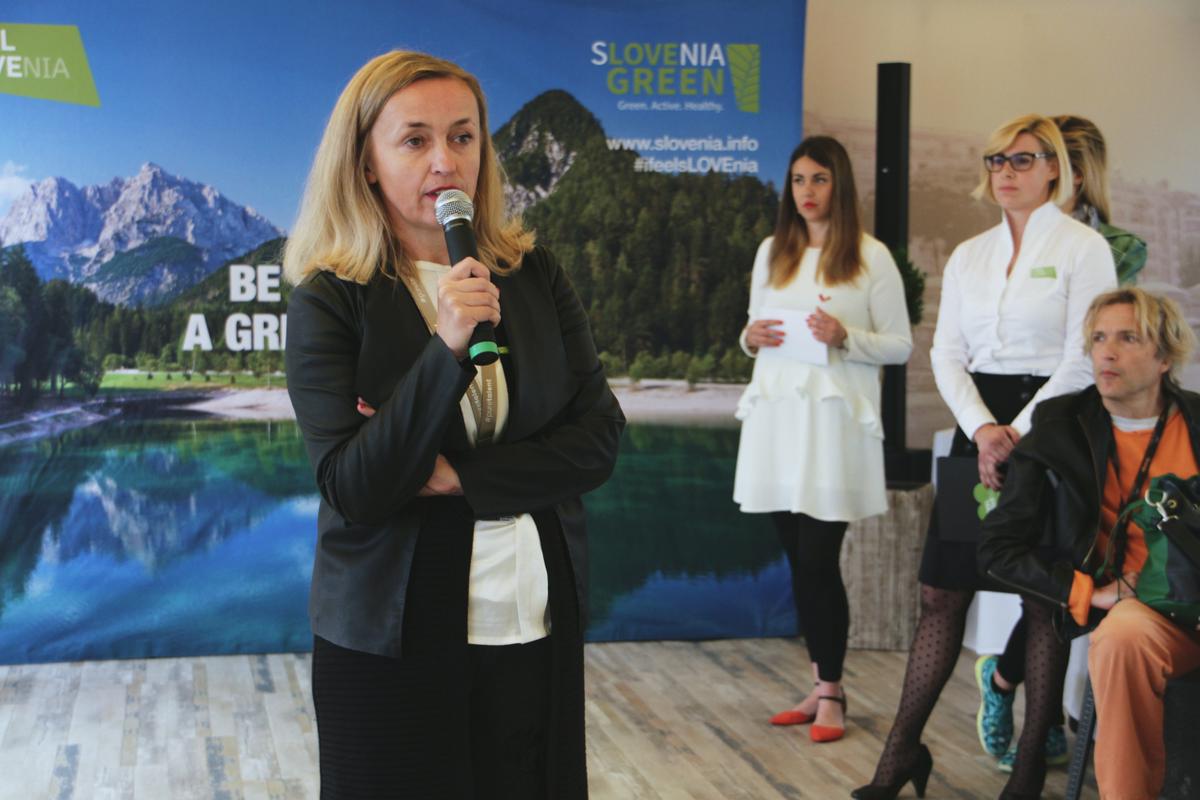
The presentation was organized in cooperation with the Slovenian Tourist Board (STA), Ljubljana Tourism, and the AIPA Institute, according to a press release from the Slovenian Film Center.
Growing interest for filming locations in Slovenia
“The rebates that Slovenia introduced last year have already paid dividends, as interest in Slovenia as a filming location has increased compared to previous years. In the following few years, we expect even more interest in our unique locations and spaces,” said SFC head Nataša Bučar as she introduced today’s presentation. The head of promotional presentations at STO Metka Pirc then explained that Slovenia’s geostrategic location, its boutique scale, and the exceptional natural and cultural diversity within its four regions represent an exceptional opportunity for international film crews.
Accessible, unique, and inspiring film destinations
Pirc emphasized that Slovenia has four distinct regions, which STO has defined as the Mediterranean / Karst Region, the Thermal / Pannonian Region, the Ljubljana and Central Region, and the Alpine Region. Pirc presented the regions as “a one-of-a-kind palette of accessible, unique, and inspiring film destinations.”
The film industry can help raise a destination’s profile. Film tourism can also contribute to a process known as deseasonalization, since films can be filmed during all four seasons. The geographical and climatic diversity of Slovenia are among the country’s key advantages in this area, she added.
The vivid colors of Ljubljana at the intersection of urban life and nature
Slovenia’s capital is best known for its “vivid colors and the intersection of urban spaces with natural environments, all factors that will satisfy even the most demanding directors and audiences,” stated representatives from SFC. The team in Cannes spent a part of its time presenting the Slovenian capital to the audience.
Daša Kastelic from Tourism Ljubljana stated that Ljubljana is a city with a green soul and a commitment to sustainable development. “Even though it’s considered a mid-sized European city, Ljubljana retains the friendliness of a smaller town, but it also has all the advantages of a large capital. The capital is the ideal base for exploring the Central Region, which contains UNESCO World Heritage attractions and primeval forests,” Kastelic added.
Several diverse locations in a single day
Slovenia has numerous advantages as a film destination. According to Alan Vitezič from the Nora Ta production company, another speaker at today’s presentation, a key advantage is that even the most remote filming location is no more than a three-hours’ drive from Ljubljana. Another advantage, according to Vitezič, is the possibility for crews to film in various locations on the same day. “You can film among the hills of Pomurje in the morning, and then move to the coast or the Alps in the afternoon,” added Vitezič, as he described the opportunities provided by Slovenia’s topography.
He is excited by the fact that Slovenia has two climatic zones – continental and coastal --, which are “more than welcome for filming, particularly during the winter season.”
Establishing contacts and connections between film professionals
The primary goal of this year’s meeting between Slovenian and foreign producers in Cannes was the promotion of Slovenia as a film destination, the exchange of production experience, and the creation of a platform for contacts and connections among film professionals, primarily among producers.
SFC would like to use such events to encourage long-term benefits of international cooperation and coproductions in the film industry.
A million euros set aside for rebates every year
The film rebate was introduced last year. The amount of the rebate covers up to 25 percent of the total (post-) production costs of an individual project spent in Slovenia. The costs include authors’ fees, transportation, the rental of film equipment, as well as food and lodging for the film crew. A million euros per year has been set aside for this purpose.

































































